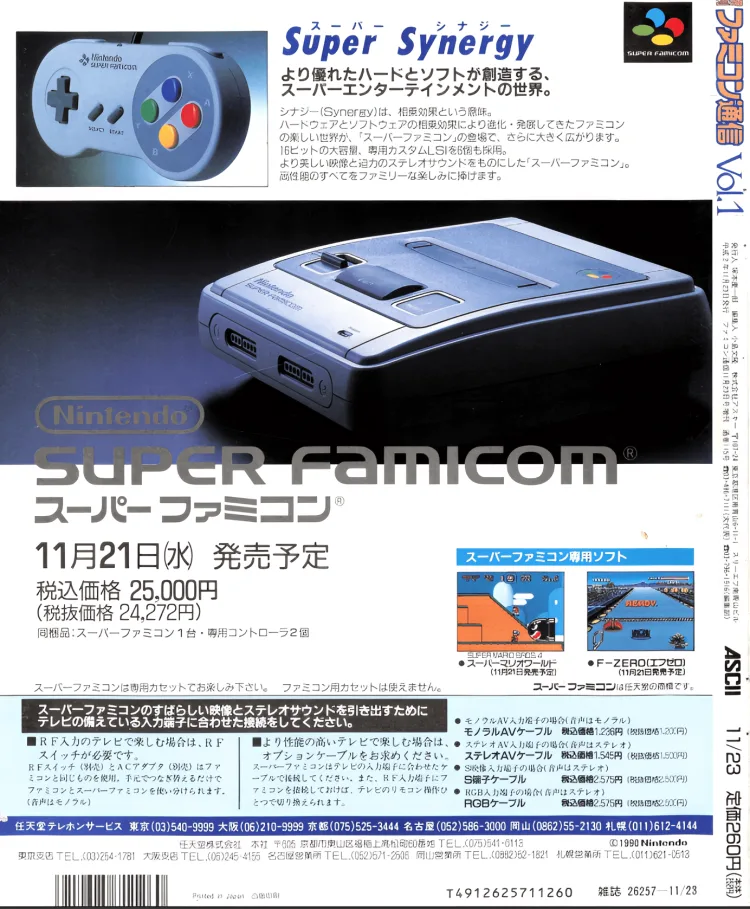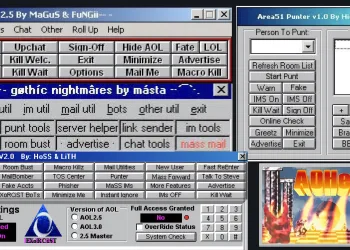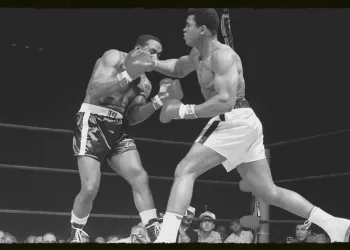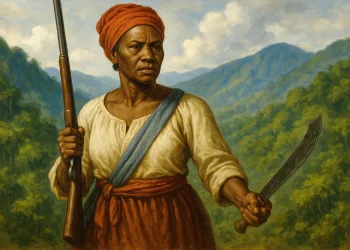The Super Famicom, short for Super Family Computer, was a 16-bit home gaming console developed by Nintendo, and a successor to the Famicon (Nintendo Entertainment System) that had dominated the video game market throughout the 1980s.
Designed by Masayuki Uemura, the Super Famicom would achieve major success worldwide, solidifying Nintendo as the dominant gaming company in the 1990s.
Titles like Super Mario World, The Legend of Zelda: A Link to the Past and Donkey Kong Country were instant classics that took the Nintendo vs Sega console war to another level, and contributed to the perception of the 16-bit era as the golden age of gaming.
Despite taking the 1990s by storm, it was the launch – the physical release – of the Super Famicom at the beginning of the decade in Tokyo, Japan that set the scene for the gaming revolution that was to come.

The Super Famicom was launched on Wednesday 21st November, 1990 in Japan. With many people eager to get their hands on this new 16-bit console, and with Nintendo having preceded the launch by months of anticipation and hype, the ensuing chaos was unprecedented.
To understand how we got to this point; to the point of metropolitan chaos, we need to go back several years to the introduction of the original Famicom.
When the original Famicom was launched in Japan by Nintendo in 1983, the video game market was experiencing a downturn. In North America, the “Video Game Crash” was unfolding; plummeting revenues, an oversaturation of poor-quality games and loss of retailer confidence. In Japan, while things weren’t as bad as in North America, interest in home consoles had been stagnating.
The Famicom reversed the stagnation in Japan and later, renamed as the Super Nintendo, reinvigorated the crashing market in North America.

What made the Famicom so successful?
At the helm of Nintendo was Hiroshi Yamauchi, who’d taken on the position of third president of Nintendo in 1949.
It was Yamauchi who oversaw the transition of the company from one that produced playing cards to one that sold electronic toys and tabletop games, and eventually video games.
He was obsessed with R&D, setting up 3 separate R&D groups in Nintendo that directly reported to him. And within each R&D group were teams that competed with each other to stimulate innovation and come up with the best ideas.
Yamauchi tipped traditional corporate culture on its head. Traditionally, marketing and sales teams would conduct their research and then direct R&D what to work on. Not at Nintendo. R&D was the big dog. No one was going to tell them what to do.

There was sensible rationale to this. Market research was designed to find out what people liked at that very moment. If R&D produced games based on that information, there’d be no innovation. Nintendo would just be creating games that people were already familiar with.
The purpose of R&D, Yamauchi believed, was to push boundaries and create games that the existing consumer hadn’t conceived of. They’d be novel and boost Nintendo’s reputation as an innovative gaming company. It’d also make Nintendo the company where the best video game designers wanted to work. And so it was that R&D was lavished with staff and resources.
Remarkably, despite being the president of Nintendo, Yamauchi had never played a video game in his life. Here was the president of a gaming company who could, within seconds, tyrannically dismiss months of hard work on ideas he didn’t like, and he’d never even played a game!
But when it came to what Nintendo released, he alone made the decision. And to many at Nintendo, that was his genius; an intuitive ability to pick games that would be massively popular.
The hyperfocus on R&D paid off.

When the Famicom was released in Japan in July, 1983, along with the games Donkey Kong, Donkey Kong Jr. and Popeye, the 8-bit console was a step up from anything that had come before. Supplemented by heavy advertising, 500,000 Famicoms were sold in the first 2 months. And then in September 1983, with the launch of Super Mario Bros, the console’s trajectory looked unstoppable.
But then, disaster struck.
Just before the new year, which happened to be the busiest period for the toy industry in Japan, retailers started calling in to Nintendo.
Something was wrong.
Customers were complaining that their Famicoms would freeze when playing certain games. Nintendo engineers rushed to their labs to replicate the problem and soon found one of the console’s integrated circuits to be consistently malfunctioning.

This was a problem on many fronts. If Nintendo simply issued fixes to customers that complained, it’d be a reactive solution that would require ongoing replacements throughout the year and the damaging of the Nintendo brand. And what if there were more issues that the team hadn’t yet been made aware of?
And of course, there were financial considerations. It could cost Nintendo a lot of money to replace Famicoms.
Hiroshi Yamauchi had a different idea.
He decided to recall ALL consoles sold. A full product recall. All Famicom systems were taken off the shelves in warehouses and stores, and sent back to Nintendo to be fixed.
It was a huge risk that could’ve marked the end of the company, but Yamauchi felt strongly that Nintendo needed to protect its reputation. Tens of millions of dollars were lost. A small price to pay in the grand scheme of things.
And it paid off.

Soon Nintendo was selling all Famicoms it could produce and was struggling to keep up with demand. Customers were frantically calling retailers, asking them when new games were coming out. After 18 months, more than 3 million consoles had been sold.
The Famicom was a step up from anything that had come before. Other consoles on the market were eclipsed and faded into obscurity, and even a promising new entrant to the home console market, Sega, which had released the SG-1000 on the same day as Nintendo, couldn’t compete.
The gaming industry had entered a new era, and unbeknownst to Nintendo at the time, it was setting the scene for the frenzy of the Super Famicom release several years later.
In the time between Nintendo launching the Famicom in 1983 and the announcement of the Super Famicom (first as a teaser in September 1987 and then officially in November 1988), Nintendo had turned video games into a mass cultural phenomenon.

It had revived the American market, created globally celebrated characters like Mario, Luigi and Link (from Legend of Zelda), and had become one of the most powerful entertainment companies in the world.
So when news broke of the development of a follow up console, it sent shockwaves throughout the industry. Competitors rushed to speed up development of their next-gen consoles while consumer anticipation and rumours reached fever pitch.
The Japanese press hyped up the Super Famicom’s specs while magazines published rare screenshots of Super Mario World. Nintendo continued to leak information about the upcoming console, partly to keep the hype going and partly to give people a message: Don’t make the mistake of going with Sega (which had launched its 16-bit Genesis console in 1988). The Super Famicom will be worth the wait.

In October 1990 there were rumours of an imminent release date in Japan. Stores were inundated with calls. The Hankyu Department Store in Osaka announced it would take reservations starting on 3rd November. But just a week later, they had to stop taking pre-orders because they were flooded with requests.
Because demand was so high, some stores ran lotteries to select which customers’ orders would actually be fulfilled. Others placed a condition on reservations – you can only buy a Super Famicom if you commit to buying other products as well. In total, 1.5 million customers got their names onto pre-order lists.
People had good reason to be excited. The Sega Genesis had a 512-colour palette, while the Super Famicom had a 32,768-colour palette, and Super Famicom cartridges had the capability to hold 30 times more storage than original Famicom cartridges.
While preparing for the launch date, set at 21st November 1990, Hiroshi Yamauchi had been informed of rumours that the Yakuza was planning to hijack deliveries.

To counter this threat, Operation Midnight Shipping went into effect. It was a highly secretive operation that was kept confidential even among most Nintendo staff. In the early hours of 20th November, ten-tonne trucks arrived at warehouses throughout Japan.
Only select people at these warehouses were told what time the trucks would arrive, and when they did, Super Famicom units along with Super Mario World and F-Zero games were quietly loaded onto them in the darkness of night.
Each truck would then leave the warehouses one-by-one to avoid suspicion. By the end of the working day on 20th November, stores had received the goods in preparation for the next day’s release.
By nighttime on the 20th in Tokyo, customers began lining up outside game shops and some brought tents to camp overnight. People even called in sick to work, something that’s frowned upon in Japanese corporate culture, so they could join the queues.

By the morning of launch day on the 21st November, lines wrapped around blocks in popular retail districts as tens of thousands of people were eager to pick up the much-hyped console.
Japanese newspapers and TV crews were on hand to report on the chaos that ensued. When word spread that Nintendo had only shipped 300,000 consoles, crowds erupted into pushing and shoving.
One department store had to close its toy department by 11:30 A.M. because it sensed a riot could break out at any moment. Another smaller store that had received only 6 units decided to close shop because they felt too embarrassed to turn down customers.
Demand was so high that even some customers who’d paid in advance couldn’t get their hands on a unit. Soon enough, a gray market emerged. Scalpers had waited in line the night before to be one of the first to pick up a unit, and later, the Super Famicom began appearing in resale markets in Akihabara and other big shopping districts at well above the ¥25,000 retail price.

TV stations covered the chaos as stores put up “Sold Out” signs, feeding into the self-perpetuation hype cycle. Things got so hectic that the Japanese government asked Nintendo to launch future consoles on weekends, a time when presumably the frenzy could be better managed.
Within three days, Nintendo’s full supply was gone. One individual in particular enjoyed hearing about what was happening. Hiroshi Yamauchi. When he took over Nintendo in 1949, he was just 21 years old. Under his stewardship, he transformed Nintendo from a company that made playing cards to a global entertainment giant that was causing metropolitan chaos in the global centre of gaming.
In the frenzy of the Super Famicom launch, Sega had managed to get their hands on 2 units. One was kept in Japan and another sent to the US for them to examine inside-out.
The Super Famicom launch was a monumental event that pushed gaming innovation and capabilities to new heights and fuelled the Nintendo vs Sega ‘Console Wars’ that defined a generation of gamers. The landscape of the gaming industry would never be the same.






